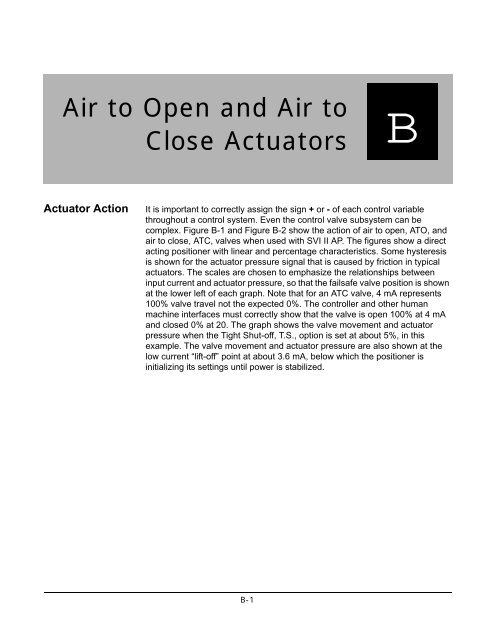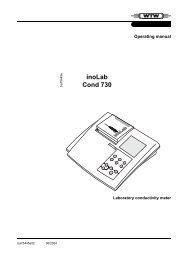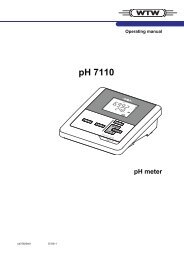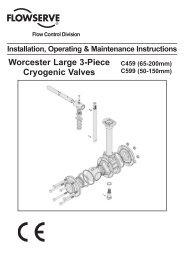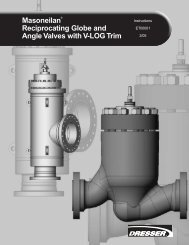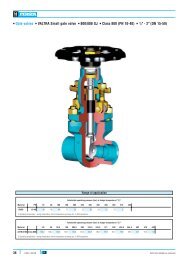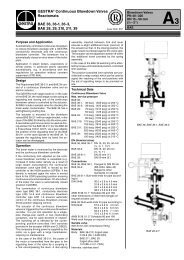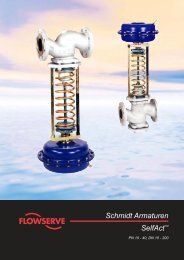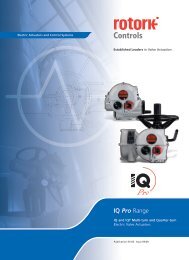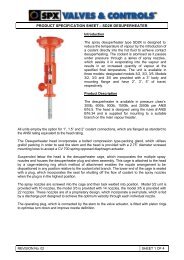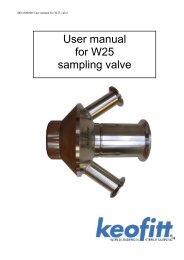SVI-II Instruc Man.book - Fagerberg
SVI-II Instruc Man.book - Fagerberg
SVI-II Instruc Man.book - Fagerberg
Create successful ePaper yourself
Turn your PDF publications into a flip-book with our unique Google optimized e-Paper software.
Air to Open and Air to<br />
Close Actuators<br />
B<br />
Actuator Action<br />
It is important to correctly assign the sign + or - of each control variable<br />
throughout a control system. Even the control valve subsystem can be<br />
complex. Figure B-1 and Figure B-2 show the action of air to open, ATO, and<br />
air to close, ATC, valves when used with <strong>SVI</strong> <strong>II</strong> AP. The figures show a direct<br />
acting positioner with linear and percentage characteristics. Some hysteresis<br />
is shown for the actuator pressure signal that is caused by friction in typical<br />
actuators. The scales are chosen to emphasize the relationships between<br />
input current and actuator pressure, so that the failsafe valve position is shown<br />
at the lower left of each graph. Note that for an ATC valve, 4 mA represents<br />
100% valve travel not the expected 0%. The controller and other human<br />
machine interfaces must correctly show that the valve is open 100% at 4 mA<br />
and closed 0% at 20. The graph shows the valve movement and actuator<br />
pressure when the Tight Shut-off, T.S., option is set at about 5%, in this<br />
example. The valve movement and actuator pressure are also shown at the<br />
low current “lift-off” point at about 3.6 mA, below which the positioner is<br />
initializing its settings until power is stabilized.<br />
B-1


